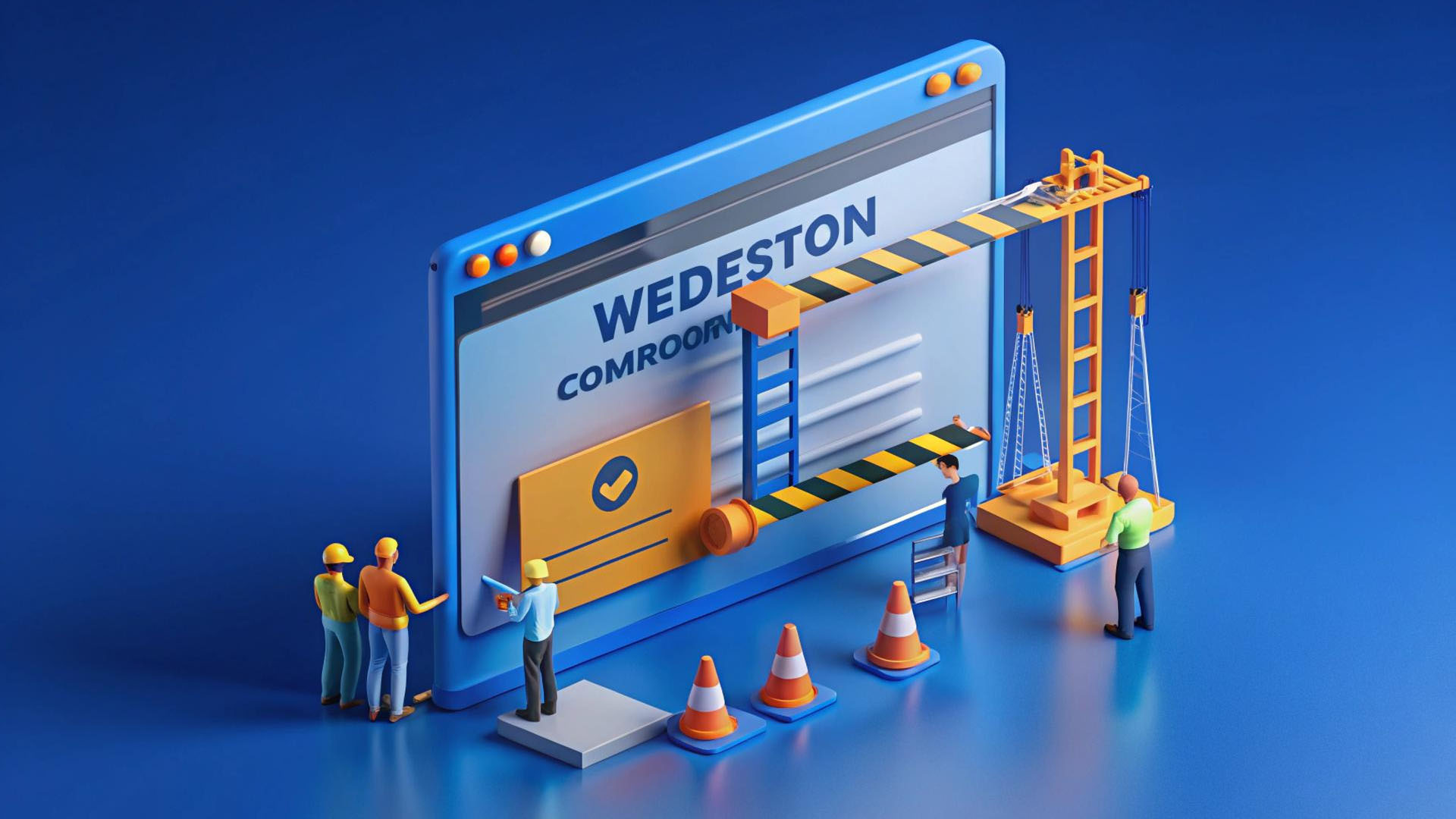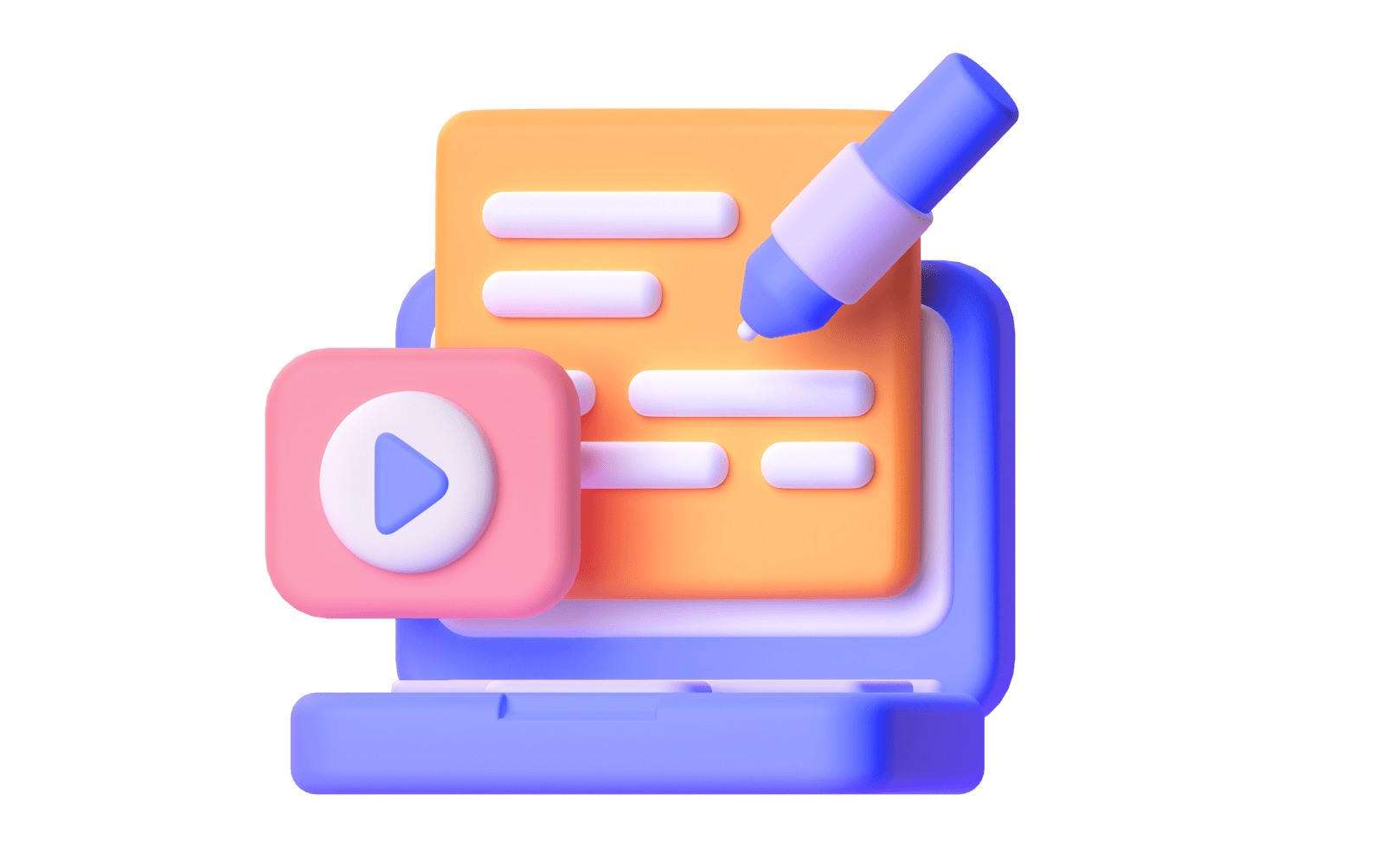Just like your home, your website can benefit from a good spring cleaning. Over time, digital clutter—outdated content, broken links, slow load times, and outdated plugins—can accumulate and negatively affect user experience, search engine rankings, and overall performance.
In this comprehensive guide, we’ll walk you through how to audit, clean, and optimize your site to create a faster, cleaner, and more effective digital experience. Whether you run a blog, e-commerce store, or business website, these tips will help you get the most out of your online presence.
1. What Is Website Spring Cleaning?

Website spring cleaning is the process of reviewing, updating, and improving your website to keep it running smoothly. Just like tidying up your home, this digital cleanup helps you remove unnecessary clutter, fix technical issues, and refresh outdated content or design elements.
It’s more than just making your site look nice. The goal is to improve how your website performs—for both users and search engines. When done right, website spring cleaning helps your site load faster, become easier to navigate, rank better in search results, and provide a better experience for your visitors.
Think of it as routine maintenance that keeps your website fresh, efficient, and ready to support your business goals.
2. Why Your Website Needs Regular Maintenance
Your website isn’t something you build once and forget about. Like any digital tool, it needs ongoing care to stay effective, secure, and relevant. Regular website maintenance ensures everything runs smoothly and helps your business stay competitive online.
Here’s why regular maintenance matters:
- Keep Information Up to Date: Your products, services, and business details may change over time. Updating your content ensures visitors always get accurate, relevant information.
- Fix Bugs and Broken Links: Technical issues like broken links or missing images can frustrate users and hurt your credibility. Routine checkups help you spot and fix these problems quickly.
- Maintain Security: Outdated plugins, themes, or software can leave your site vulnerable to hackers. Regular updates protect your site and your visitors’ data.
- Ensure Compatibility: As browsers and devices evolve, your website needs to adapt. Maintenance ensures your site looks and functions correctly on the latest technology.
- Support SEO and User Experience: Search engines favor websites that are fast, secure, and up to date. Maintenance helps you stay visible in search results and creates a smoother experience for users.
See More: Is It Time for a Website Revamp? Complete Guide in 2025
3. Key Benefits of Website Spring Cleaning
Giving your website a seasonal refresh isn’t just a visual upgrade—it can lead to real improvements in how your site performs and supports your business goals. Here are some of the most important benefits:
- Better User Experience (UX): A clean, organized website is easier for visitors to navigate. When users can quickly find what they’re looking for, they’re more likely to stay on your site longer and engage with your content.
- Faster Load Speeds: Over time, websites can become weighed down with large images, outdated plugins, or unnecessary scripts. Cleaning these up helps your site load faster, which reduces bounce rates and keeps users happy.
- Improved SEO Performance: Search engines like Google favor websites that are well-maintained, fast, and easy to use. A clean site structure, updated content, and optimized elements can help you rank higher in search results.
- Higher Conversion Rates: A modern, focused website with updated messaging and clear calls-to-action (CTAs) encourages visitors to take action—whether that’s making a purchase, filling out a form, or subscribing to your newsletter.
- Stronger Security: Outdated plugins and software can create security risks. Removing what you don’t need and updating the rest helps protect your site from potential threats.
4. Signs Your Website Needs a Refresh

Wondering whether your website is due for a cleanup? Here are some common warning signs that indicate it’s time for a refresh:
- Slow Page Load Times (More Than 3 Seconds): If your pages take too long to load, visitors will leave before they even see your content. This also hurts your rankings on search engines like Google.
- Outdated Content: Old blog posts, incorrect product details, or outdated contact information can make your business look unprofessional and unreliable.
- Broken Links and 404 Errors: When users click on links that lead nowhere, it creates frustration and damages their trust in your site. It’s also a red flag for search engines.
- Inconsistent Design Elements: Mismatched fonts, outdated images, and inconsistent branding make your site look messy and unpolished, which weakens your brand image.
- Poor Mobile Experience: If your website isn’t easy to use on smartphones or tablets, you’re likely losing a large percentage of your visitors. Mobile responsiveness is essential in 2025.
- Unused Plugins or Features: Extra tools or plugins that are no longer in use can slow down your site and create potential security vulnerabilities.
- Low Search Rankings: If your site doesn’t appear on the first page of search results, it could be due to technical issues, outdated content, or poor performance—all fixable with a proper website cleanup.
If any of these issues sound familiar, it’s time to give your website the attention it deserves. A well-maintained site is faster, safer, and more effective at reaching your goals.
5. Step-by-Step Website Spring Cleaning Checklist
Keeping your website clean and high-performing doesn’t have to be overwhelming. Follow this simple, step-by-step checklist to refresh and optimize your site:
a) Back Up Your Website
Before you make any changes, always create a full backup of your website. This includes files, images, and your database. A backup acts as a safety net—if something goes wrong during cleanup, you can quickly restore everything.
b) Audit Your Content
Review all the pages on your site, including blog posts, service pages, images, videos, and downloadable resources.
- Delete outdated information or products.
- Rewrite or update weak or outdated content.
- Make sure your copy is keyword-optimized and aligned with your current goals.
This step ensures that visitors get accurate, engaging, and helpful information.
c) Check for Broken Links
Broken links frustrate users and hurt your SEO.
- Use free tools like Broken Link Checker or Screaming Frog SEO Spider to find and fix any 404 errors.
- Redirect removed pages to relevant alternatives using 301 redirects.
Keeping your site link-healthy builds trust and improves the user journey.
d) Test Your Site Speed
Website speed affects both user experience and search rankings.
- Use tools like Google PageSpeed Insights or GTmetrix to see how fast your pages load.
- Look for suggestions on reducing load time, such as compressing images, using browser caching, or removing unnecessary scripts.
A faster site keeps visitors engaged and helps lower bounce rates.
e) Review Plugins and Themes
Plugins and themes can impact performance and security.
- Remove any plugins you’re no longer using.
- Update all active plugins to the latest version.
- Make sure your theme is still supported and up to date with modern web practices.
Cleaning up here can improve speed and close security gaps.
f) Update SEO Metadata
Search engines rely on your metadata to understand your content.
- Review and update page titles, meta descriptions, header tags, and image alt text.
- Make sure they’re relevant, unique, and include current target keywords.
Optimized metadata boosts your visibility in search engine results.
g) Optimize Images
Large image files can slow your site down dramatically.
- Compress images using tools like TinyPNG or ImageOptim.
- Use the appropriate image file formats (WebP, JPEG, PNG).
- Enable lazy loading so images only load when users scroll to them.
Efficient image use improves load time without sacrificing visual quality.
h) Improve Mobile Responsiveness
With the majority of web traffic coming from mobile, your site must work smoothly on phones and tablets.
- Test your site across different devices and screen sizes.
- Fix layout issues, button sizes, or font readability problems.
- If your site isn’t mobile-friendly, consider switching to a responsive design.
Google also favors mobile-optimized sites in its rankings, making this a must-do.
By following this structured checklist, you’ll not only give your website a fresh new feel, but also enhance performance, user satisfaction, and search visibility. Regular spring cleaning ensures your digital presence stays competitive and effective all year round.
6. Content Audit: Keep, Update, or Delete

A content audit is one of the most effective ways to improve your website’s performance. It involves reviewing every piece of content to determine whether it’s helping or hurting your goals.
Your goal is to make sure each page on your website is:
- Accurate and up to date
- Aligned with your brand voice and message
- Optimized for relevant keywords
- Contributing to your SEO, engagement, or conversion goals
How to Evaluate Each Page:
Ask yourself the following questions for each piece of content:
- Is this information still correct and relevant?
Remove any outdated statistics, discontinued services, or irrelevant details. - Does this content reflect my current branding and tone?
Make sure the voice, visuals, and messaging match your brand’s current identity. - Is it optimized for search engines?
Check if your target keywords are included naturally in the content, title tags, headings, and meta descriptions. - Does this page drive value for my business?
Whether it’s generating traffic, leads, or conversions, each page should serve a clear purpose.
Use Analytics to Guide Decisions:
Use tools like Google Analytics or Search Console to evaluate:
- Page views
- Bounce rate
- Average time on page
- Conversions or goal completions
These insights will help you categorize content into three groups:
a. Keep
Pages that are performing well, are still relevant, and are aligned with your brand and goals. These may only need minor edits or updates.
b. Update
Pages with potential but currently underperforming. These might have outdated content, lack keywords, or need better formatting. Revise and optimize them to improve their impact.
c. Delete or Redirect
Content that no longer adds value or has no SEO potential. Instead of letting these pages sit idle or frustrate users, remove them or set up 301 redirects to a more relevant page.
7. Speed & Performance Optimization
Improve website performance to enhance user experience and SEO
Website speed is more than just a user experience factor—it’s a crucial ranking signal for search engines like Google. A slow website can lead to high bounce rates, lower conversions, and reduced visibility in search results.
Here’s how you can improve your site’s speed and overall performance:
a. Minify CSS, HTML, and JavaScript
Reduce file sizes by removing unnecessary characters, spaces, and line breaks from your code. This helps pages load faster without affecting how they look or function. You can use tools like MinifyCSS, UglifyJS, or automation through CMS plugins to handle this process.
b. Use a Content Delivery Network (CDN)
A CDN stores your site’s static content on multiple servers around the world. When a user visits your website, content is served from the server closest to their location, reducing load time significantly.
c. Enable Browser Caching
Browser caching allows repeat visitors to load your site faster by storing some elements (like images, scripts, or stylesheets) on their local device. Configure caching settings via your .htaccess file or use a caching plugin if you’re on WordPress.
d. Upgrade to Faster Hosting
Shared hosting can slow down your website, especially as your traffic grows. Consider upgrading to a virtual private server (VPS) or dedicated hosting to improve reliability and load times.
e. Limit Use of Heavy Scripts and Animations
Complex animations, auto-playing videos, and third-party scripts can drastically slow down your site. Only use animations when they enhance user experience and ensure they’re optimized for performance.
f. Optimize Databases
For content-heavy websites, especially WordPress sites, the database can become bloated over time. Regularly clean up spam comments, old revisions, and unused tables using tools like WP-Optimize or similar database management plugins.
Why Speed Matters
A fast website delivers several key benefits:
- Higher SEO rankings
- Better user engagement
- Lower bounce rates
- Increased conversions and sales
- Improved mobile performance
8. Design & UX Enhancements

A clean design makes your site easier to use and visually appealing. Consider:
- Simplifying the homepage layout
- Creating clear CTAs on every page
- Improving typography and spacing for readability
- Using consistent branding across all pages
- Updating visuals (images, banners, sliders)
Great design should support user goals—make it easy to find information and take action.
9. SEO Tune-Up for 2025
Refresh your SEO strategy to stay ahead in search rankings
Search engine optimization (SEO) is not a one-time task—it needs regular updates to keep up with changing algorithms and user behavior. A website spring cleaning is the perfect opportunity to fine-tune your SEO efforts and boost visibility.
Here’s how to update your SEO effectively in 2025:
Update Your Keyword Research
Search trends and language evolve. Revisit your keyword list and use modern SEO tools (like Google Keyword Planner or Ahrefs) to identify what your audience is searching for today. Focus on both primary keywords and long-tail phrases that match user intent.
Improve Internal Linking
Check your site’s internal links to ensure that they help users and search engines easily navigate your site. Use descriptive anchor text, link to high-priority pages, and avoid broken or outdated links. This also helps distribute page authority throughout your site more effectively.
Refresh Technical SEO
Make sure your technical setup supports strong SEO performance. This includes:
- Fixing crawl errors using Google Search Console
- Updating your XML sitemap to reflect any changes in site structure
- Reviewing your robots.txt file to ensure you’re not blocking important content from search engines
These steps help ensure that your site is fully indexable and performs well in search engine crawls.
Focus on Mobile-First Indexing
Google uses mobile versions of websites for indexing and ranking. If your mobile site is slow, poorly designed, or missing important content, it can hurt your SEO. Make sure your mobile experience is fast, responsive, and fully functional.
Add Structured Data (Schema Markup)
Structured data helps search engines understand your content better. By using schema markup (such as product, article, FAQ, review, or local business schema), you increase your chances of appearing in rich results like featured snippets or Google’s knowledge panels.
Why This Matters
These SEO tune-up steps are essential if you want to:
- Improve keyword rankings
- Drive more organic traffic
- Ensure your site is technically sound
- Stay competitive in evolving search landscapes
Final Tip
SEO is an ongoing process, but a focused tune-up each spring helps your site remain search-friendly and visible to your target audience. Even small changes can lead to big results over time.
See More: What Is a Website? A Beginner’s Guide
10. Tools to Help With Website Cleaning
Make the cleanup process faster and more effective with the right tools
Spring cleaning your website doesn’t have to be overwhelming—especially when you have the right tools at your disposal. These platforms help you identify problems, improve performance, and keep everything running smoothly.
Below is a list of recommended tools categorized by specific tasks:
a. SEO Auditing
Use these tools to find issues that might be hurting your search rankings, such as missing metadata, crawl errors, or broken links.
- SEMrush
- Ahrefs
- Moz Pro
These platforms provide detailed SEO audits and keyword insights.
b. Website Speed Testing
Evaluate how fast your pages load and receive tips on how to make them faster.
- Google PageSpeed Insights
- GTmetrix
Both tools highlight speed bottlenecks and offer improvement suggestions.
c. Broken Link Checking
Dead links can harm user experience and SEO. These tools help you find and fix them:
- Broken Link Checker (web-based and WordPress plugin)
- Screaming Frog SEO Spider (desktop app for deep site audits)
d. Content Performance Review
Understand how users interact with your content and identify pages that need improvement.
- Google Analytics – Track page views, bounce rates, and more
- Hotjar – Use heatmaps and session recordings to see where users get stuck
e. Image Optimization
Large images can slow down your site. Use these tools to compress files without losing quality:
- TinyPNG
- ShortPixel
They reduce file sizes and improve load speed, especially important for mobile users.
f. Security Scanning
Identify malware, outdated plugins, or vulnerabilities that could put your site at risk.
- Sucuri SiteCheck – Free online scanner
- Wordfence – Security plugin for WordPress with firewall and malware protection
11. How Often Should You Clean and Maintain Your Website?
Keeping your website in top shape isn’t a one-time job—it’s an ongoing process. While a full website “spring clean” is typically done once a year, many maintenance tasks should be performed more regularly to prevent issues from building up.
Here’s a recommended maintenance schedule to keep your website running smoothly all year long:
Monthly Tasks
These smaller tasks help you stay on top of performance and security:
- Update Plugins and Software: Make sure your CMS, themes, and plugins are always up to date to prevent security vulnerabilities.
- Check Website Speed: Use speed testing tools to ensure your pages are loading quickly.
- Review Analytics: Monitor traffic trends, bounce rates, and user behavior to catch problems early.
Quarterly Tasks
Every few months, take a deeper look into performance and user experience:
- Test Mobile Responsiveness: Check how your site performs across different mobile devices and screen sizes.
- Run an SEO Audit: Identify and fix broken links, outdated keywords, or metadata issues to stay competitive in search results.
Annual Tasks
Once a year, conduct a full review of your website:
- Complete Content Audit: Review all content to ensure it’s still accurate, valuable, and aligned with your current brand and goals.
- Evaluate Design and UX: Consider whether your site still meets modern design standards or if a refresh is needed.
- Review Hosting and Tools: Make sure your current hosting plan and tools still meet your business needs.
Why Consistent Maintenance Matters
By spreading out your maintenance tasks, you can avoid sudden, time-consuming problems or the need for an expensive full overhaul. Regular upkeep ensures:
- Faster performance
- Improved SEO
- Stronger security
- Better user experience
- Higher conversion rates
Think of your website like a car—it runs best with routine maintenance, not just when something breaks down.
12. Why Choose iCreationsLab for Website Optimization
A clean website is just the beginning—true success comes from turning your site into a powerful business tool. At iCreationsLab, we specialize in both website optimization and complete redesigns, helping businesses create fast, functional, and visually stunning websites that drive results.
We don’t just fix surface-level issues. Our team dives deep to uncover hidden performance gaps, improve usability, and align your site with your business goals.
What You Get When You Work With Us:
In-Depth Content and SEO Audits
We review your entire site—pages, keywords, metadata, and structure—to ensure your content is performing at its best and aligned with modern SEO best practices.
Speed and User Experience Enhancements
We improve site load times, simplify navigation, and optimize the user journey to reduce bounce rates and increase engagement.
Mobile-First Responsive Design
With mobile users making up over 60% of web traffic, we design and test your site to look and work beautifully on all screen sizes.
Branding and Visual Refresh
From logos and color palettes to image styles and layout design, we enhance your brand’s visual appeal and consistency.
Security and Backup Integration
We implement key security measures to protect your site and regularly back up your data to prevent loss or downtime.
Ongoing Monitoring and Support
Even after launch, we keep an eye on your site’s performance and offer continued support to ensure long-term success.
See More: Is Your Website Secure? Protect It With Smart Maintenance
13. Get a Free Website Consultation – Clean, Optimize & Grow
Is your website slow, outdated, or not delivering the results you expect? At iCreationsLab, we help businesses unlock the full potential of their websites through strategic cleaning, optimization, and redesign.
Whether you need a quick tune-up or a full transformation, we’ll evaluate your current site and recommend the most effective solutions tailored to your needs, goals, and budget.
What You’ll Get from Our Free Consultation:
- A full assessment of your website’s current performance
- Insights into issues affecting speed, SEO, content, and user experience
- Clear recommendations for improvement—no technical jargon
- Custom solutions designed around your business objectives
Let’s Give Your Website a Fresh Start
Book your free consultation today and discover how we can help you:
- Clean up outdated content and design
- Optimize for speed, SEO, and mobile responsiveness
- Grow your visibility, traffic, and conversions
Contact Us:
iCreationsLab
190 Woodlands Industrial Park E5, #07-08
Woodlands BizHub, Singapore 757516
📞 +65 6269 9558 (Mon – Fri / 10am – 6pm)
📧 [email protected]
Don’t let an underperforming website hold your business back.
Let’s transform your site into a high-performing digital asset.

